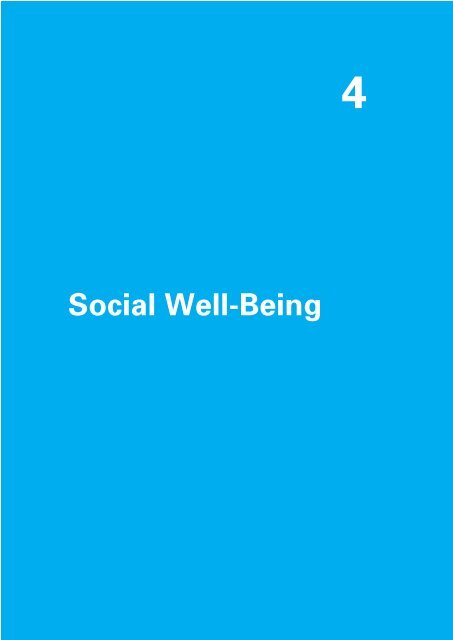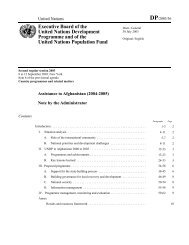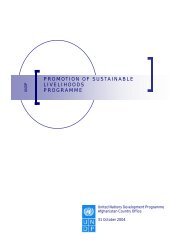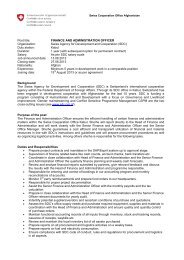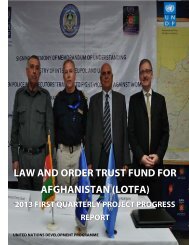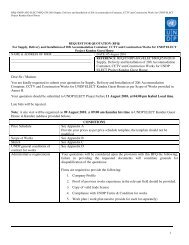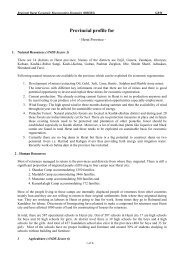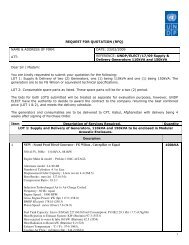1 - UNDP Afghanistan
1 - UNDP Afghanistan
1 - UNDP Afghanistan
You also want an ePaper? Increase the reach of your titles
YUMPU automatically turns print PDFs into web optimized ePapers that Google loves.
52<br />
4<br />
Social Well-Being<br />
1. The Situation in <strong>Afghanistan</strong><br />
<strong>Afghanistan</strong>’s social indicators, which were low even before the 1979 Soviet invasion,<br />
rank at or near the bottom among developing countries, inhibiting poverty reduction and<br />
preventing the fulfilment of rights to health, education, food and shelter. In the almost three<br />
years that have passed since the fall of the Taliban, important progress has been made in all<br />
sectors, but much remains to be done in order to reach a significantly strengthened social<br />
infrastructure, realise the rights to survival, livelihood, protection and participation, and<br />
achieve the MDGs [see also Introduction, Who Are the Poor in <strong>Afghanistan</strong>?]. In addition,<br />
the earlier devastation has been compounded by the severe drought that is still ongoing in<br />
many areas [see also Economic Development and Growth]. Overall, it should be noted that<br />
demand-based approaches are critical to meet social well-being and that local institutions<br />
such as Community Development Councils are key to success in this regard.<br />
With an estimated Total Fertility Rate of 6.26 per woman and an average population growth<br />
rate of 2.5 percent per year, the population of <strong>Afghanistan</strong> is increasing very rapidly; 57<br />
percent of Afghans are younger than 18. Average life expectancy, however, stands only<br />
at 44.5 years 98 – as much as 20 years less than the regional average for South Asian<br />
countries. The high fertility rate, combined with early marriage 99 and lack of access to<br />
modern family planning measures and health facilities, has taken a devastating toll on the<br />
health of both mothers and children.<br />
98 Statistical Yearbook of<br />
<strong>Afghanistan</strong> 2003.<br />
99 A 2004 study by the Ministry<br />
of Women’s Affairs and women’s<br />
NGOs estimated that 57 percent of<br />
girls marry before age 16.


